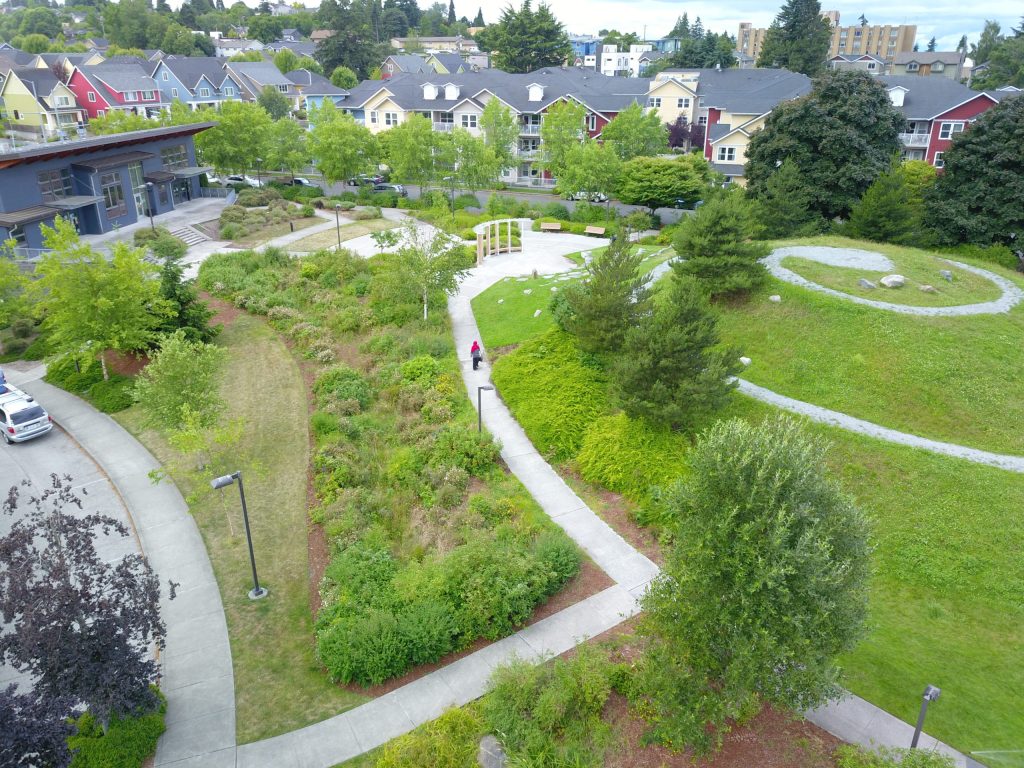Many people turned to nature to alleviate stress and participate in outdoor recreation during the COVID-19 pandemic. However, nature is less available in low-income and communities of color – the same communities hit hardest by COVID-19. A new study quantifies nature inequity across all urbanized areas in the United States and found that neighborhoods with less nature access had greater COVID-19 case rates.
The Gist
Published in the journal Nature Sustainability, the study is the first of its kind to quantify the relationship between nature exposure and COVID-19 case rates using detailed spatial data for 17 US states. Researchers from the San Francisco Estuary Institute and The Nature Conservancy say the extensive dataset demonstrates that the pandemic has compounded disadvantages in low-income areas and communities of color already facing fewer areas of park available for recreation and less greenness (including tree cover).
It’s well documented that millions of people turned to outdoor recreation and park visitation as safe options during the pandemic. However, nature (including parks and greenness) is systematically less available in low-income and communities of color. The researchers showed this result is very widespread across the U.S. using the largest dataset to date, covering all 486 urbanized areas in the country.
The study found both an indirect and a direct link between nature exposure and COVID-19 case rates.
The Big Picture
According to the study, neighborhoods with more greenness – including tree cover and other vegetation – have lower COVID-19 rates. The researchers are quick to point out that this is in no small part due to a bias in the distribution of greenness, with minority and low-income neighborhoods being less green.
“Communities of color faced a double-burden during the COVID-19 pandemic: greater COVID-19 case rates, which made social distancing more essential, and less nature nearby to ease the mental strain of social distancing,” says coauthor Rob McDonald, lead scientist for nature-based solutions for The Nature Conservancy.
McDonald notes that the direct link between nature exposure and COVID-19 case rates is even more surprising. The study found that even after statistically controlling for race, income, and a host of other factors, more greenness is associated with lower COVID-19 rates: an increase of 0.1 in Normalized Difference Vegetation Index (NDVI), a common measure of greenness, was associated with a 4.1% decrease in COVID-19 incidence rates.
This suggests that there may be a direct relationship between nature exposure and lower COVID-19 rates. The study did not uncover why this relationship exists, the researchers suggest one potential physiological explanation is the relationship between nature contact and stress. Many other studies have shown that exposure to greenness reduces stress levels, which is associated with increased immune system function.
The Takeaway
Conservationists often extoll the benefits and values of nature participation, including physical health, mental health and for connecting people to biodiversity. Such values have been even more extensively promoted during the pandemic. However, it’s important to recognize that access to nature is inequitably distributed.
This has far-reaching implications beyond the pandemic, and should highlight the need for conservationists, recreation planners and others to invest in urban nature, and to ensure that in those investments, low-income and communities of color have access to parks and greenness.
“Our paper shows a stark example of how the Covid-19 pandemic can exacerbate existing inequity,” says lead author Erica Spotswood, of the San Francisco Estuary Institute. “The inequality in nature in US cities has been shown to have many health effects, and now it looks like it also had significant health implications during the COVID-19 pandemic.”




Join the Discussion